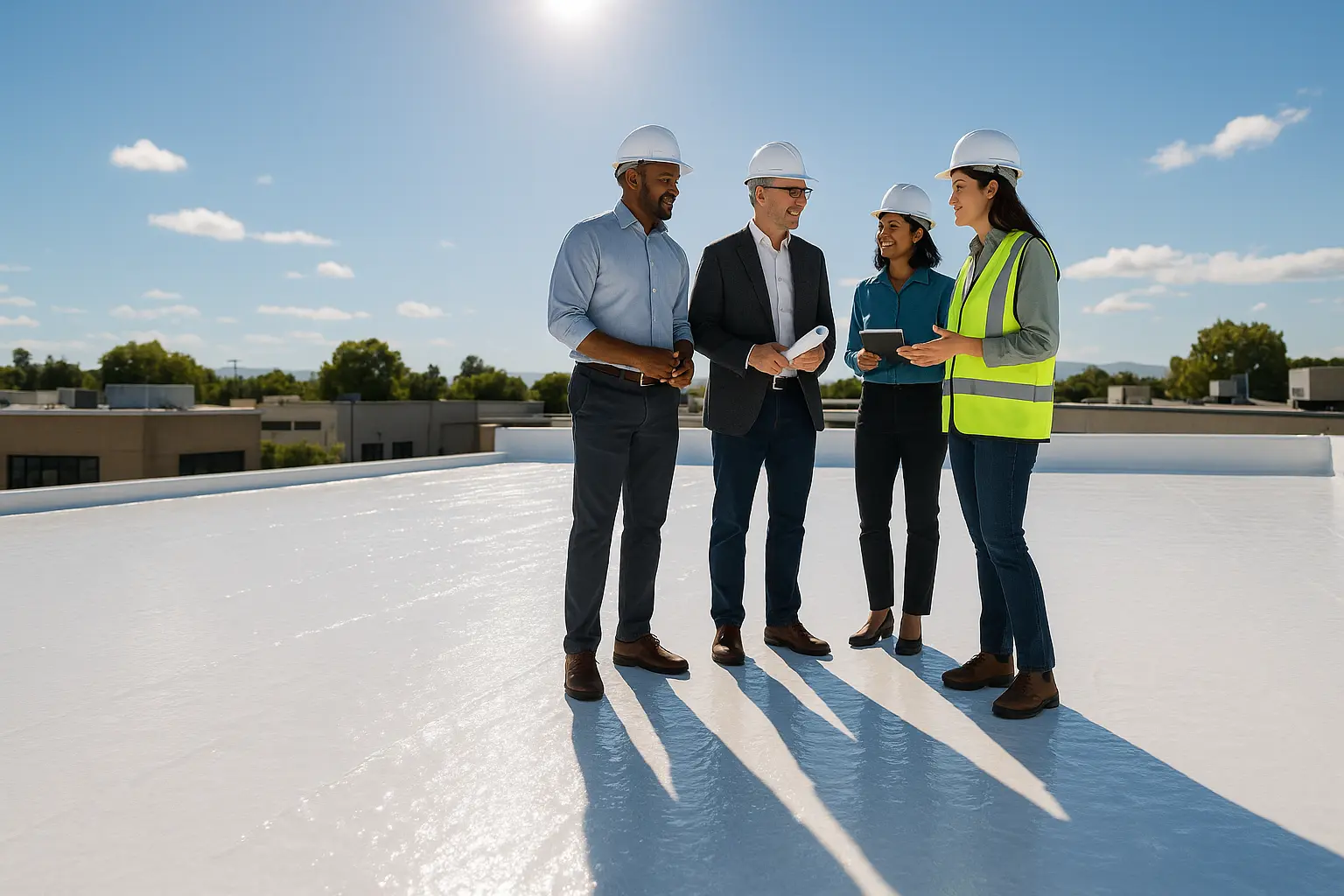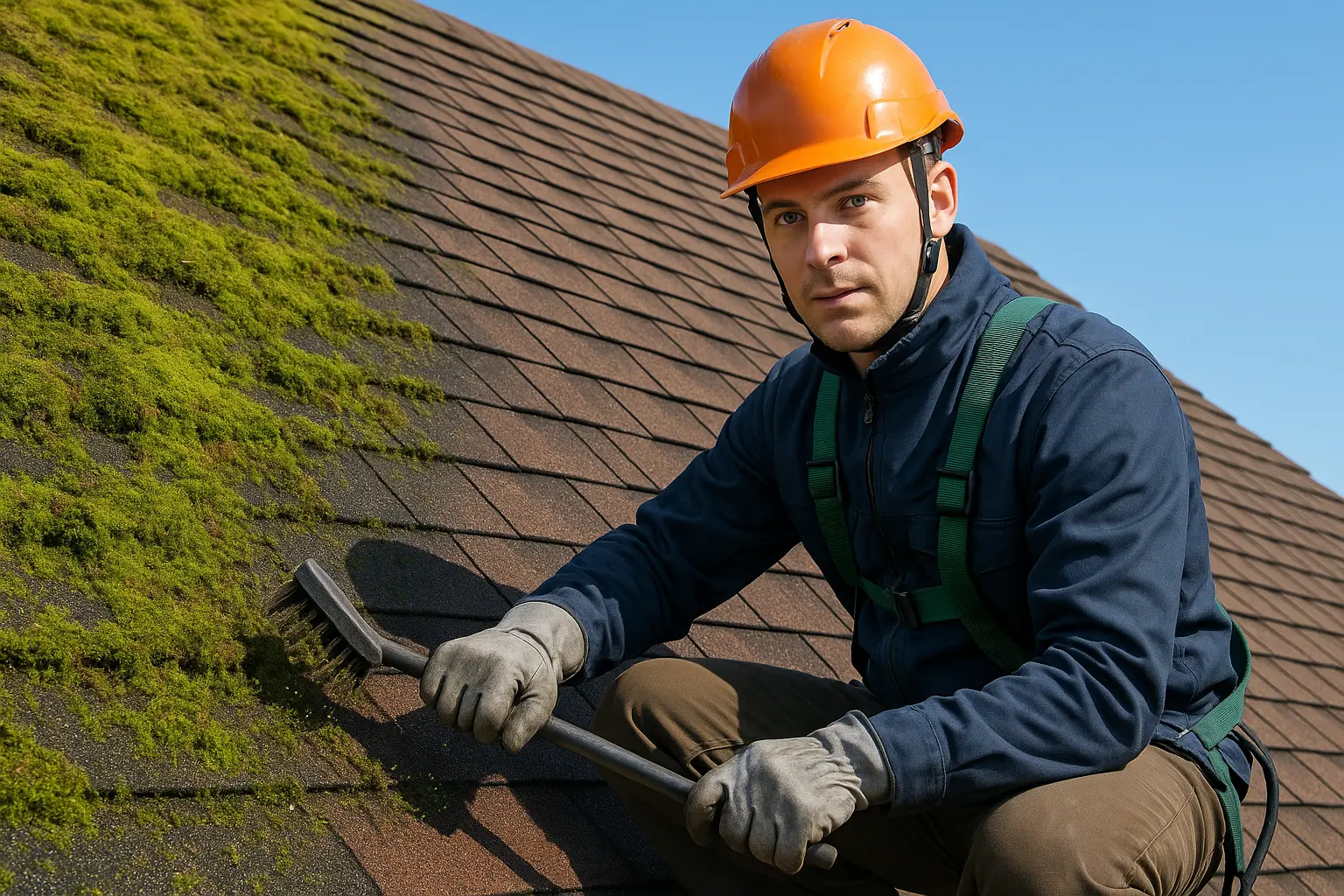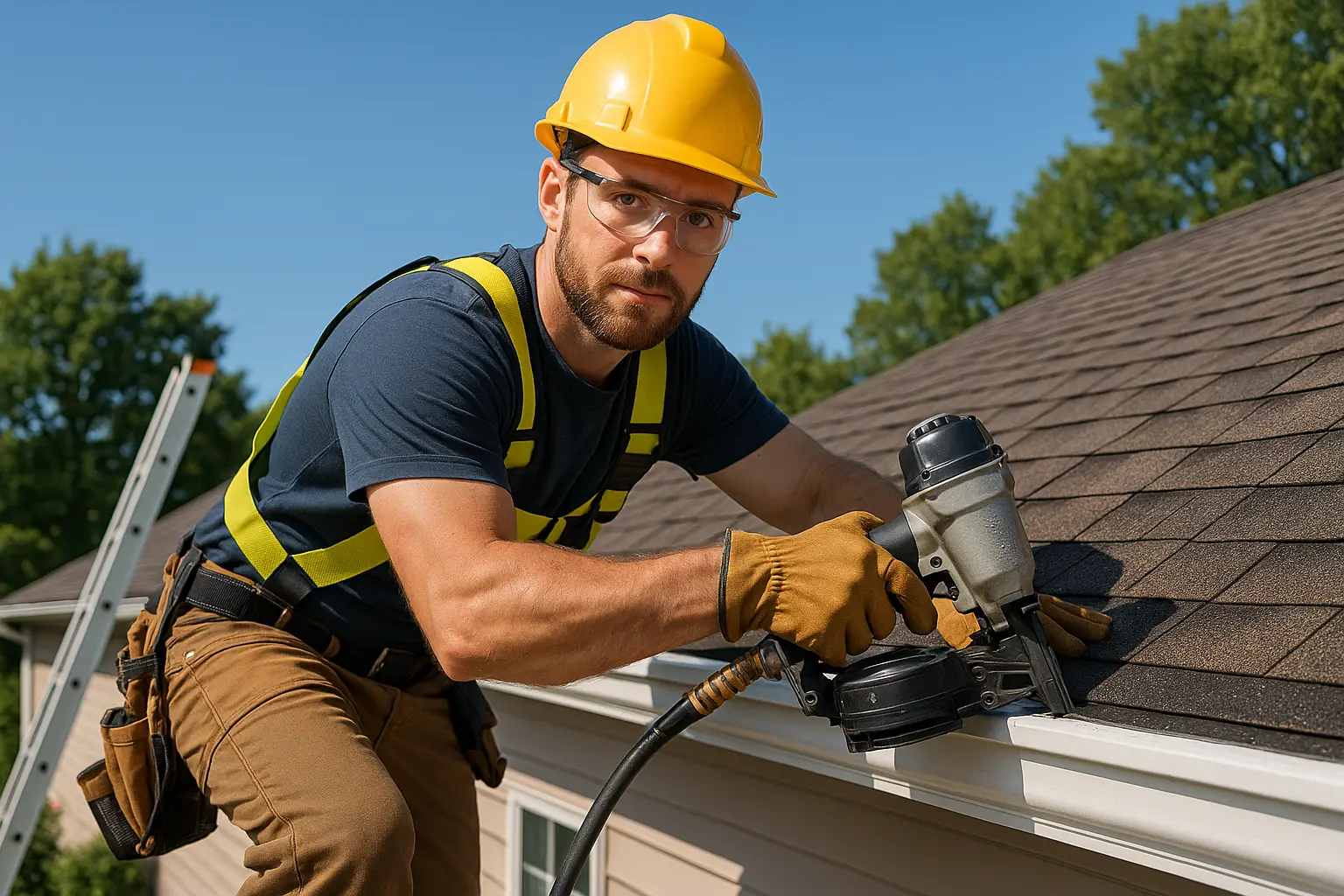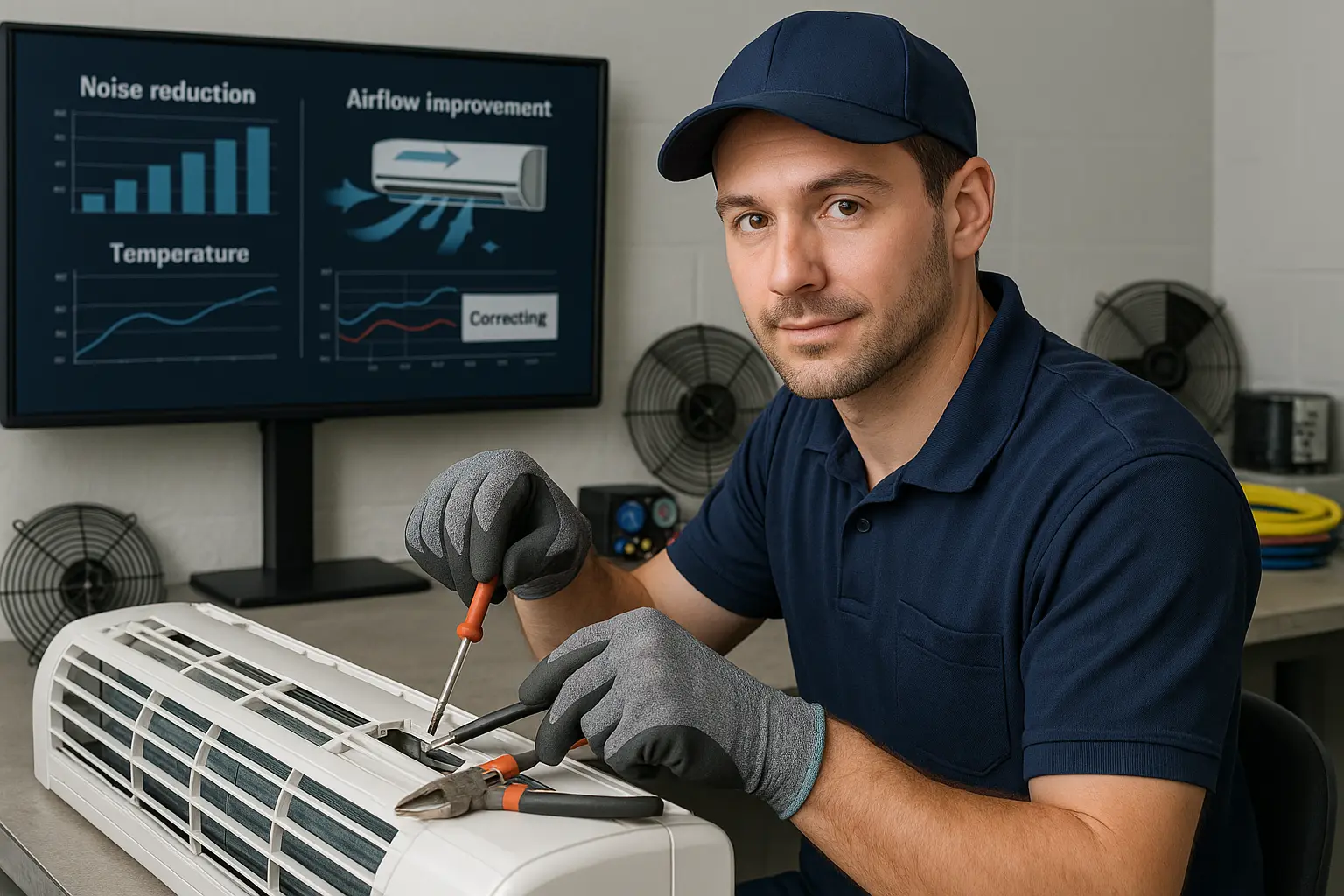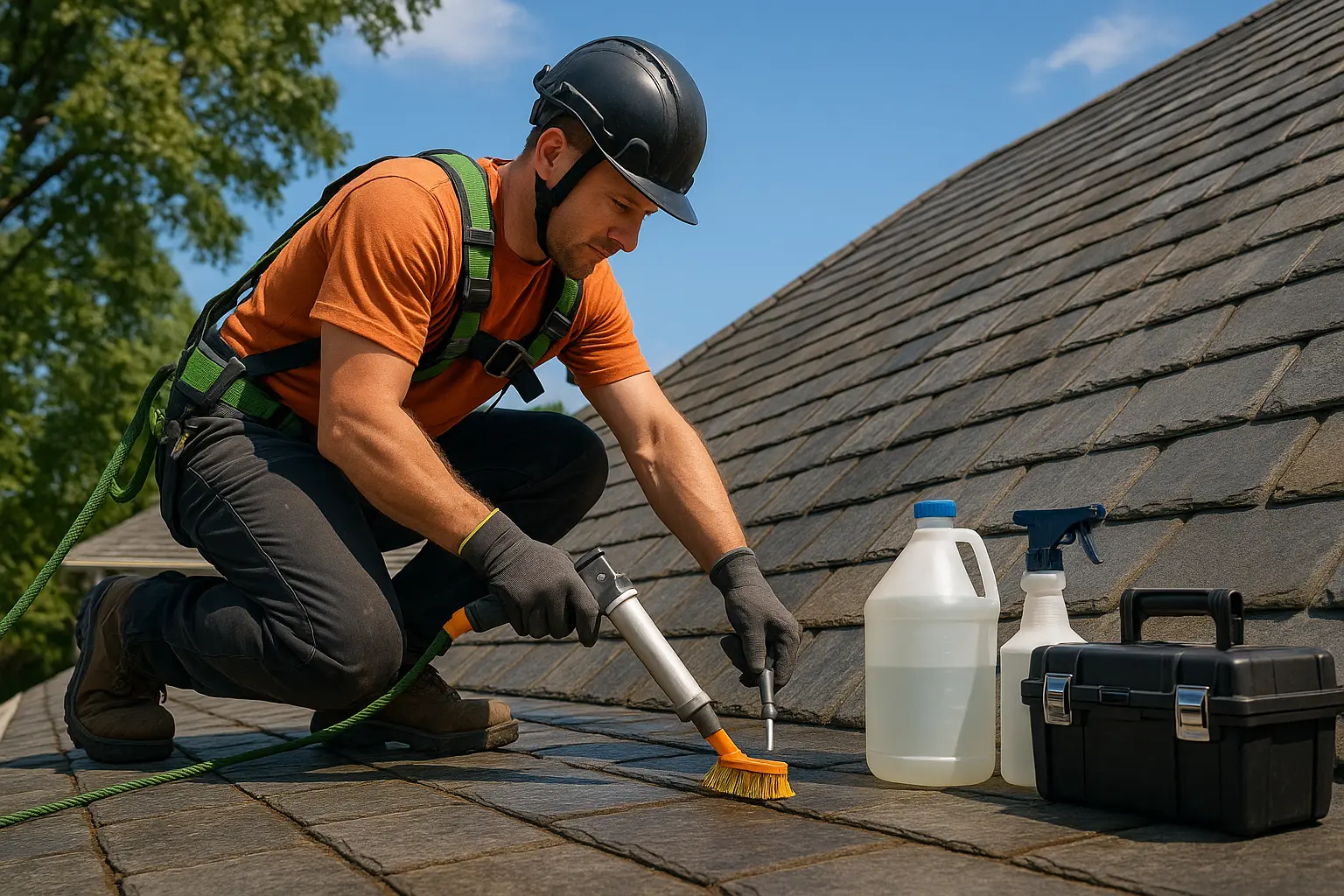Understanding UV Damage to Roofs
What is UV Damage?
Ultraviolet rays, although not visible to our eyes, play a big role in wearing down roofing materials. When we talk about UV damage, we mean the slow breakdown of roof components as they face constant exposure to these powerful rays. In time, repeated exposure saps the strength of the roof’s materials, breaking chemical bonds and leading to wear that shows up as discoloration, fading, and even crumbling of the surface.
This process kicks off when UV light makes its way through the outer layer of the roof. The sunlight sparks chemical reactions that eat away at the protective coatings applied during manufacture. As an example, asphalt shingles may lose some of their binding oils, leaving them brittle and prone to cracks. Similarly, non-metal roofing can develop tiny fractures that eventually turn into major issues. Research from roofing experts has revealed that roofs exposed to nonstop sunlight for over 15 years can lose nearly one-third of their original strength, underscoring why it’s so vital to understand these effects early on.
Grasping the science of UV damage isn’t simply about knowing your roof is getting older—it’s about spotting the early warning signs and acting before problems become severe. Both homeowners and roofers benefit from learning how UV light gradually weakens roofing. This knowledge encourages smarter upkeep routines and better selection when choosing roofing materials.
Why Roofs are Vulnerable
Roofs naturally bear the brunt of environmental challenges more than any other part of a building. Facing the full force of the sun, roofs are directly in the path of UV rays all day long. Without the shelter of walls or nearby trees, they bear the intense glare and constant heat, which speeds up deterioration.
The types of materials used in roofing also make a difference. Traditional options like asphalt shingles are particularly prone to wear because their compounds break down under UV light. In contrast, metal or tile roofs usually offer better endurance against the harsh sun. However, even these can suffer when temperatures swing dramatically between day and night. The repeated heating and cooling cause the materials to expand and contract, setting off tiny damages that pile up over time. Homeowners looking for effective UV roof protection should watch for these signs.
Another factor is the angle at which sunlight hits the roof. In warmer climates or areas closer to the equator, the roof is bombarded with high-intensity daylight for long stretches, which worsens the damage. Over the years, this persistent exposure creates more than just surface issues—it can harm the overall structure, making routine maintenance an essential part of extending a roof’s life.
Visible Signs of UV Damage
It pays to recognize the obvious signs of UV damage early. Spotting these issues can help you nip expensive repairs in the bud. Cracked or curled shingles, for instance, often signal that the roof has been battered by too much sun over time.
One clear clue is a change in the roof’s color. When hues start to fade, it means the protective layer is wearing off and the pigments are breaking down. A once vibrant roof may now look drab or uneven. Loose or missing shingles are another alarm that the glue or adhesive holding the roof together is failing.
Also, the appearance of mold or algae indicates a mix of excess moisture and weakened materials. Although mold is usually linked to damp conditions, its growth on a UV-damaged roof is a warning sign that the material’s integrity is compromised. Recognizing these changes—a slight roughness or a few cracks—can help save you from the high costs of major repairs.
Protective Measures Against UV Damage
Use UV-Resistant Materials
When building a new roof or replacing an old one, selecting the right materials is a key step in fighting UV damage. Materials designed to resist the sun’s harsh effects, like metal and tile, provide long-term benefits. These options maintain their strength and look much longer than standard asphalt shingles.
Metal roofs not only bounce back much of the UV light but also boast excellent durability. They often come with special treatments to cut down on the sun’s impact. Similarly, tile roofs made from clay or concrete have natural qualities that fend off fading and cracking. Modern roofing products often include UV inhibitors, which stop the rays from breaking down the materials’ chemical bonds.
Choosing these advanced materials can make a significant difference in how long your roof lasts. Studies show that roofs built with UV-resistant features can keep their strength for up to 50% more time than those made from standard materials. In the long run, spending a bit more up front helps avoid repeated repairs.
In fact, comparisons between traditional asphalt roofs and metal ones consistently favor the latter when it comes to handling sun exposure. Homeowners see not only a boost in curb appeal but also fewer maintenance headaches, especially in areas with strong sunlight.
sunscreen roof
Another smart way to protect your roof is by applying reflective coatings—often called cool roof coatings. These treatments work by bouncing a lot of the sun’s heat right back into the air, so less heat is absorbed by the roof. This cooler surface helps reduce thermal wear-and-tear over time. Using a reflective coating is a must for a true sunscreen roof strategy.
These coatings are usually mixtures of reflective pigments and resins that stick well to many roofing surfaces. By keeping the roof cooler, these treatments also help lower the temperature inside your home, which can lead to savings on air conditioning bills during hot days. Homeowners who have turned to reflective coatings report that their roofs remain in better shape for longer periods.
Practical examples show that a reflective coating can lower a roof’s surface temperature by more than 20°F. This makes a strong case for them as part of your sunscreen roof plan, especially when combined with materials chosen for UV roof protection. Overall, this technique not only defends the roof but also boosts energy efficiency—a win-win for any household.
Regular Roof Maintenance
No matter how smart your material choices or advanced your coatings, regular roof maintenance remains essential. Routine check-ups are the first line of defense against UV damage and weather-related issues. Through periodic inspections, minor problems—like loose shingles or small cracks—can be discovered before they balloon into costly repairs.
A proper maintenance routine includes a thorough visual check for signs such as peeling surfaces or faded colors, which hint that the roof is suffering from too much UV exposure. Cleaning the roof after storms or heavy debris buildup is key, as accumulated dirt can hold moisture and heat, worsening the damage.
Beyond your own inspections, scheduling an annual check by a professional can spot details you might miss. Experts use special tools to detect very subtle signs of fading or warping. This proactive approach helps catch issues when they’re small, saving you money and hassle down the road.
Maintenance also means keeping the gutters clear and ensuring good drainage. When water pools on a roof that’s already been weakened by UV rays, the damage can multiply. Combining routine upkeep with timely repairs (and innovative approaches like a sunscreen roof strategy) builds a strong, long-lasting defense against the sun’s relentless attack.
Adopting Sustainable Sunscreen Roof Practices
Install Protective Awnings
Installing protective awnings is one practical way to cut down on UV exposure. These roof overhangs serve as an extra shield between your roof and direct sunlight. Awnings can greatly reduce the intensity of UV rays hitting your roof, proving to be a smart addition to your overall sunscreen roof strategy.
Awnings come in many styles and can be adjusted to match your home’s look while offering efficient shade. Retractable options give you the freedom to let the sunlight in during cooler periods while shielding the roof when the heat peaks. This flexible approach not only protects the roof but also enhances natural lighting inside your home.
Using awnings can also help with energy savings. When the roof absorbs less heat, the inside of your home stays cooler, reducing how hard your air conditioner has to work. Many households report lower energy bills after adding awnings, a benefit that complements the broader UV roof protection methods.
Neighborhood studies have even shown that homes with well-placed awnings have a more comfortable microclimate overall. This integration of style and function reinforces the idea that sustainable practices are key to a robust and efficient sunscreen roof system.
Landscaping for Shade
Another green option to lessen the impact of UV rays is using landscaping to create shade. Planting trees or shrubs in spots where they naturally shield your roof helps lower the amount of direct sunlight hitting the surface. This approach not only beautifies your home but also adds another layer to your sunscreen roof plan.
Trees with expansive canopies, for example, provide a natural cooling effect, cutting down the heat that your roof absorbs. Deciduous trees offer shade during the warmer months and drop their leaves in the colder seasons, letting in more light when it matters. This natural balance supports both energy savings and prolonged roof life.
Well-thought-out landscaping has been shown to lower the ambient temperature around a home. With less heat impacting the roof, the cycle of expansion and contraction lessens, reducing the chances of material fatigue. This extra effort not only enhances your property’s curb appeal but also reinforces the overall UV roof protection strategy.
Recycling Roofing Materials
When it’s time to replace the roof, handling old materials the right way is a vital part of sustainable home care. Recycling roofing materials is a responsible choice that cuts down on waste and promotes the reuse of valuable resources. By recycling old materials, you play a part in a cycle that might create new, eco-friendly building products, further supporting your sunscreen roof approach.
Today’s recycling methods allow many roofing products—including asphalt shingles, metal panels, and certain tiles—to be processed and repurposed. For example, worn asphalt can become a component in paving projects, while metal roofs get melted down and reformed into new products. This method reduces the demand for new raw materials and aligns well with broader environmental goals.
Municipal recycling programs often back these practices, sometimes even giving homeowners tax incentives for recycling. Embracing these strategies not only reduces construction waste but also sets a shining example of environmental responsibility. It’s one more way to add to your overall plan for UV roof protection while caring for the planet.
Conclusion
Keeping your roof in shape under constant UV exposure calls for a well-rounded plan combining smart material choices, thoughtful treatments, and regular upkeep. Understanding how UV rays impair roofing materials can guide you to act early—spotting signs like fading, cracking, or loose shingles—and take steps before minor issues become major headaches.
By choosing UV-resistant materials, applying reflective coatings, and sticking to scheduled maintenance, you lay the groundwork for a roof that stands up to the test of time. Incorporating strategies such as installing protective awnings and using landscaping to create natural shade further reinforces your sunscreen roof strategy and contributes to overall energy savings.
Each homeowner should look at roof care as more than just repair work—it’s a smart investment. A well-maintained roof not only guards against heavy repair costs but also ensures your home stays cool and efficient. Through thoughtful material selection and sustainable measures like recycling, you help protect both your property and our environment.
In short, defending your roof against UV damage is about building a resilient, long-lasting barrier to harsh elements. With careful planning and a steadfast commitment to upkeep—plus a good dose of a sunscreen roof mentality—your roof can thrive for decades, keeping your home safe, efficient, and environmentally friendly.

